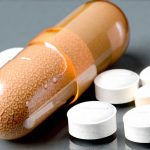Identifying and Tracking Bladder-Stressing Foods
Many individuals experience urinary frequency, urgency, or even incontinence at some point in their lives. While there are numerous underlying causes – ranging from neurological conditions to infections – dietary factors often play a significant, yet frequently overlooked, role. It’s not necessarily about eliminating foods entirely, but rather understanding how specific substances can impact bladder function and learning to manage intake accordingly. This is particularly relevant for those managing conditions like overactive bladder (OAB) or interstitial cystitis (IC), where dietary modifications are often a key component of symptom management. Recognizing that everyone’s sensitivity levels differ is crucial; what triggers one person may have no effect on another, making personalized tracking essential.
The connection between food and bladder health stems from the way our bodies process these substances. Certain foods contain chemicals that can irritate the bladder lining or increase urine production, leading to those uncomfortable sensations we associate with a stressed bladder. It’s also important to remember that hydration plays a massive role; while adequate fluid intake is vital for overall health, types of fluids can significantly impact bladder behavior too. This article will explore how to pinpoint your personal trigger foods, methods for tracking them effectively, and strategies for navigating a diet that supports a happier, healthier bladder.
Common Culprits: Foods & Beverages to Investigate
The list of potential bladder-stressing foods is surprisingly extensive, but some are more frequently reported as irritants than others. It’s important to approach this with an open mind – don’t assume something on the “common culprits” list will necessarily affect you. Instead, treat it as a starting point for your investigation. Beverages often take center stage, given their direct impact on urine production and bladder filling. – Caffeine (coffee, tea, soda) is notorious for its diuretic effect and can also directly irritate the bladder. – Alcohol, similar to caffeine, increases urine output and can worsen symptoms. – Carbonated drinks introduce gas into the digestive system, potentially putting pressure on the bladder. – Artificial sweeteners are often flagged as irritants, even though they contain no caffeine.
Beyond beverages, specific foods frequently appear on “bladder health” lists: – Citrus fruits (oranges, grapefruit, lemons) and juices are known for their acidity, which can irritate the bladder lining in sensitive individuals. – Tomatoes and tomato-based products (sauce, ketchup) also possess high acidity levels. – Spicy foods contain capsaicin, a compound that can trigger urgency and discomfort. – Chocolate contains methylxanthines similar to caffeine and may be irritating for some. – Artificial colors and preservatives found in processed foods are sometimes linked to bladder sensitivity. It’s important to note this isn’t an exhaustive list, and the degree of irritation varies drastically between individuals; diligent tracking is key to identifying your personal triggers.
The Elimination Diet Approach
An elimination diet can be a powerful tool for uncovering your specific bladder-stressing foods. This involves temporarily removing suspected irritants from your diet and then systematically reintroducing them one at a time, carefully observing any changes in your symptoms. It requires discipline and patience, but the insights gained can be invaluable. 1. Identify Suspects: Begin by creating a list of foods and beverages you suspect might be contributing to your bladder issues, using the “common culprits” list as a starting point. 2. Elimination Phase (2-4 weeks): Completely remove all identified suspects from your diet. This means reading labels carefully and avoiding hidden sources of irritants. Keep a detailed symptom journal during this phase – note frequency, urgency levels, any pain or discomfort, and overall bladder health. 3. Reintroduction Phase: After the elimination period, slowly reintroduce one food item at a time, every 2-3 days. Monitor your symptoms closely after each reintroduction. If you experience increased bladder irritation, remove that food from your diet again. Continue this process for all suspected foods.
This method isn’t about permanent deprivation; it’s about identifying what your body can tolerate. You may find you can enjoy certain triggers in small amounts without experiencing significant issues. It is also important to remember to maintain consistent hydration during the elimination and reintroduction phases, as dehydration itself can exacerbate bladder symptoms. If you have underlying health conditions or are taking medications, consult with a healthcare professional before starting an elimination diet. Understanding how to track food-related flare triggers can be incredibly helpful during this process.
Symptom Journaling: Your Bladder’s Diary
A detailed symptom journal is arguably the most crucial component of identifying bladder-stressing foods. It provides a concrete record that allows you to correlate dietary intake with changes in your urinary health. Don’t rely on memory – write it down! The more detail you include, the better. – Food & Beverage Log: Record everything you eat and drink, including portion sizes. Be specific about ingredients (e.g., “tomato sauce,” not just “pasta”). – Timing is Key: Note when you consumed each item. This helps identify potential delayed reactions. – Symptom Tracking: Rate your symptoms on a scale (e.g., 1-10) or use descriptive terms (e.g., “mild urgency,” “moderate discomfort”). Include: * Frequency of urination * Urgency levels * Any pain, burning, or pressure * Leakage incidents – if applicable – Other Relevant Factors: Record any other factors that might influence your bladder health, such as stress levels, exercise, or medication changes.
Reviewing your journal regularly will reveal patterns you might not otherwise notice. For example, you might discover that citrus fruits consistently trigger urgency a few hours after consumption, or that caffeine exacerbates nighttime frequency. Digital apps designed for food tracking can simplify the process and offer built-in symptom logging features, making it easier to analyze your data. Consider utilizing daily urology meal logs to streamline this process. Remember consistency is paramount; even seemingly insignificant details can contribute to valuable insights.
Hydration & Bladder Health: It’s Not Just How Much, But What You Drink
While adequate hydration is essential for overall health and bladder function, the type of fluids you consume matters significantly. Water remains the gold standard – it’s neutral in pH and doesn’t contain irritating compounds. However, other beverages can have a detrimental impact on bladder health. As mentioned earlier, caffeine, alcohol, and carbonated drinks are common triggers. Even seemingly innocuous juices (especially citrus-based) can cause irritation for sensitive individuals. – Spread Fluid Intake: Avoid drinking large volumes of fluid at once; instead, distribute your intake evenly throughout the day. This prevents rapid bladder filling and reduces urgency. – Avoid Bedtime Fluids: Limit fluid intake in the hours leading up to bedtime to minimize nighttime awakenings.
Consider exploring alternatives to traditional beverages. Herbal teas (avoiding those with caffeine) can be soothing, but always check for potential irritants. Infused water – adding slices of cucumber or berries to your water – can make hydration more appealing. Pay attention to how different fluids affect your bladder specifically and adjust your intake accordingly. It’s a balancing act; you need enough fluid to stay hydrated, but also want to minimize irritation. Remember that everyone’s tolerance levels differ, so find what works best for you. Learning how to rehydrate without flooding the bladder is key to managing symptoms effectively.





















